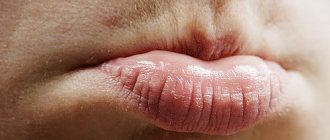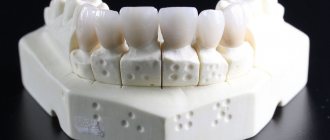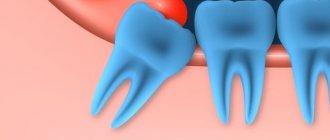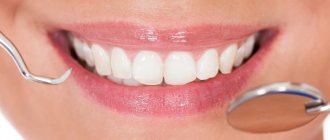Why do teeth turn black?
External and internal factors can change the color of teeth.
External reasons
Poor oral hygiene
If a person brushes his teeth incorrectly or not well enough, plaque remains on them, which accumulates over time and turns into a kind of shell of the teeth. Bacteria actively multiply in dental plaque, and their metabolic products thicken this layer and make it more durable. Tooth enamel is quite resistant to colored pigments found in food and drinks. Such substances cannot penetrate deeply, so they are quickly removed with liquid, saliva and toothpaste. But dental plaque is very susceptible to such dyes. Especially to pigments contained in:
- Strong coffee and tea;
- Berries, fruits and vegetables with dark skin or pulp - blueberries, blackberries, mulberries, beets, etc.;
- Red wine;
- Turmeric;
- Drinks with synthetic colors.
Unlike tooth enamel, plaque has a porous structure in which pigment particles settle and color it. It is impossible to completely remove dye particles from the pores by regular brushing of teeth, and over time they become clogged with a new layer of plaque. The more plaque coats the enamel, the darker the teeth become.
Smoking
There is even such an expression as “smoker’s teeth.” People who smoke a lot and often are easily recognized by their yellow or even dark brown teeth. This color comes from the resins found in cigarette smoke.
These hard and sticky substances settle on the surface of the teeth, literally sticking to it. This is what causes dark plaque on the teeth of smokers. It is difficult to remove such darkening of the enamel using regular toothpaste and a brush. Especially on the lateral surfaces of the teeth. Over time, the layer of resinous plaque becomes thicker and the teeth turn blacker.
Internal reasons
Let's start with the fact that the color of teeth does not depend on tooth enamel, which is transparent, but on the color of dentin. Accordingly, a change in shade is a consequence of some processes in this fabric.
Caries
The most common cause of black teeth is caries. It may appear as brown or gray spots. This is how dentin destroyed by bacteria is stained. The more tissue is destroyed, the darker and more extensive the darkening. If the tooth is darkened but does not hurt, this may mean that caries has not yet reached the pulp.
Secondary caries appears as dark stripes. They form between the filling and dentin if, during filling, the doctor did not completely remove the damaged tissue, did not “clean” the cavity, or if the filling did not fit tightly enough to the tooth tissue.
Filling material
Some dental canal filling materials contain substances that can stain dentin. Nowadays they are rarely used and only by “old school” specialists, but 10-15 years ago they were very common. The substances gradually stain the hard tissue of the tooth. Accordingly, a person who had his canals filled with such material 10 years ago is now seeing a darkened tooth.
"Metal" fillings
It is also a filling material that tends to change the color of the tooth over time. To increase the strength of the filling, silver amalgam is added to its composition. Now this material is considered obsolete and is practically not used in modern dentistry. But there are quite a lot of people who have had such fillings installed, and most of them are dissatisfied with the color of the teeth treated in this way.
Injuries
A tooth is a living organ that receives nutrition and oxygen through blood vessels. If for some reason the vessels are damaged, for example due to a blow, and blood enters the dentin, the tooth first becomes red, then purplish-brown, and over time darkens even more. If a tooth turns brown, the cause is usually injury.
Removal of dental nerve
After depulpation and removal of the neurovascular bundle, the tooth becomes dead. It no longer receives the nutrition and minerals that are necessary to maintain the natural color of dentin. Therefore, pulpless teeth darken over time. Plus, secondary caries often develops in them.
Symptoms of root caries
Pathology has the same symptoms as caries of other classifications, but its impact is more destructive, and the consequences are more unpleasant and more dangerous for dental health. Carious lesions can spread deep inside, gradually destroying all the canals. Here is what the main signs of cervical caries look like:
- increased reaction of teeth to cold, hot, sour, sweet foods;
- the appearance of dark spots on gums with carious lesions;
- pain when chewing food and while brushing teeth.
All of these symptoms indicate the development of a disease that consists of several stages.
- Chalk stain. At this stage, a slight dark spot appears on the surface of the enamel without changing its shape or size. Particular sensitivity to acidic foods may occur. At the matte spot stage, caries under the gum is eliminated without the use of a drill.
- Superficial stage. The spot becomes rough, and gradual destruction of the enamel begins. A diseased tooth reacts to various irritants, in addition to sour: hot, cold, including cold air, mechanical stress. The pathology begins to actively progress.
- Middle stage. Cavities form in teeth as dentin is destroyed. The defect is already becoming clearly visually noticeable.
- Deep stage. The process spreads deep into the tooth, reaching the roots and nerve endings. The pain can be very severe, especially at night, and discomfort occurs when inhaling cold air.
There is no clearly defined boundary between the listed stages; the transition from one to another is so smooth that it is almost impossible to track it. In an advanced stage, serious consequences can develop: for example, circular caries, when the process already covers the entire gingival area of the crown in a circle. Teeth at this stage break off easily.
Black teeth in children
The condition of “baby” teeth in children directly depends on the general condition of the body. Color changes can be caused by:
- Disorders of the gastrointestinal tract;
- Dysbacteriosis;
- Taking certain antibiotics;
- Decreased immunity;
- Fungus;
- Calcium deficiency;
- Excess fluoride and a number of other factors.
Just like permanent teeth, caries can develop in baby teeth. If a child’s tooth is black and hurts, then the destruction process has reached the internal tissues - the pulp.
Priestley's Raid
Parents often turn to the pediatric dentist with complaints about black plaque on the teeth that forms in the gum area. Despite its rather frightening appearance, this condition is usually not dangerous. Such deposits are called Priestley's plaque. The reason for black plaque on teeth is the development of the child’s digestive system, its adaptation to “adult” food. When the process is completed, the plaque disappears. But if you find black deposits on your child’s teeth, you still need to see a dentist. Often, caries develops under such plaque. You can stop this process at the initial stage using simple and painless methods.
Consequences of cervical caries if left untreated
Advanced caries near the gums is very dangerous, it can progress quite quickly and cause complications such as:
- periodontitis;
- pulpitis;
- inflammation of the gums;
- an abscess or a well-known flux.
In addition, the development of caries in the gums is often associated with pathologies of the thyroid gland and diabetes mellitus. It is necessary to conduct a comprehensive diagnosis to determine the exact cause of the disease. After the therapy prescribed by the endocrinologist, the disease may recede.
What can you do about black teeth at home?
At home, it is possible to combat the darkening of teeth only in cases where the cause is external - plaque or deposits of tobacco tar. You can try to eliminate them with a highly abrasive toothpaste. But this means:
- Ineffective if the plaque is dense and hard;
- Cannot be used continuously as abrasive particles damage tooth enamel.
We do not recommend using home teeth whitening complexes offered by sellers on the Internet. They usually contain aggressive components that, together with plaque, destroy tooth enamel.
Additional reasons for the development of caries under the gum
In addition to factors directly related to the impact on the teeth, there are also third-party causes that can provoke the occurrence of a carious process between the gum and tooth.
Let's name the most common ones:
- hormonal or endocrine disorders in the body;
- use of medications that increase enamel porosity;
- lack of certain vitamins, especially group B;
- poor quality of drinking water;
- heredity;
- increased acidity of the body;
- age factor and others.
Taking into account these additional reasons, the treatment of gum caries should not be limited only to the work of the dentist. In this case, it should be comprehensive with the involvement of several specialists, for example, an endocrinologist and others. If the cause is not eliminated, the pathology will return again and again.
Black teeth: what to do
The best way to solve the problem of black teeth is to see a doctor. The dentist will determine the cause of the color change and tell you how it can be eliminated. If your teeth have darkened due to the accumulation and staining of plaque, professional hygiene will help restore them to their original color. For example, contactless cleaning using the Air-flow method. If, in addition to plaque, tartar has formed on the teeth, this procedure can be combined with ultrasonic cleaning.
To eliminate the blackness that appears due to bacterial damage to dentin, you need to cure a carious tooth. This also applies to secondary caries. There are methods for lightening teeth that have changed color due to the components of filling materials. They are effective if the tooth has darkened by no more than 1-2 shades. If it is impossible to restore the natural color of the tooth, the dentist will suggest covering it with a crown or installing a veneer.
Our clinic’s specialists will restore the whiteness of your teeth, no matter why they have darkened. To consult with a doctor, make an appointment for a free initial appointment using the form on the website or by phone.
Features of filling caries near the gums
Placing fillings in the area near the gums is much more difficult than with other types of caries - approximal or fissure. This is due to some factors that arise during the work process:
- the area near the gums is inconvenient for filling, especially on the upper teeth;
- Saliva gets on the affected area all the time, even placed cotton rolls do not help;
- During the treatment process, blood is always released, which also enters the working area.
The closer to the root a tooth is damaged, the more difficult it is to treat. Due to the fact that cervical caries most often affects the front teeth, you need to choose the color of the material with special care - it should ideally match the color of the enamel, since the aesthetic visual effect plays a role here.
Preventive crown care
The prosthesis installed in the mouth is influenced by food chemicals, saliva, and microbes. Without systematic proper care of crowns, they become covered with plaque, lose their original color, and become a breeding ground for infection.
Prevention of the development of infection in the oral cavity, especially under fixed dentures, involves strict adherence to the following hygiene rules:
- Teeth should be brushed at least 2 times a day: morning and evening, and if possible, more often. Brushing technique: movements of the toothbrush are performed from the gum to the top of the tooth at an angle of 45°. The procedure time is at least 3 minutes.
- Rinse your mouth with clean water after every meal.
- For better cleaning of teeth and dentures, it is recommended to actively use additional devices: interproximal and tuft brushes, dental floss.
- Use irrigators. To rinse the oral cavity, various agents with an antibacterial effect are used that destroy pathogenic microorganisms.
A well-installed prosthesis with good care will reliably and for a long time protect the tooth from external factors. But if a tooth infection does occur and decay begins, without proper treatment the pathological process will only progress, which will lead to serious complications. To eliminate the consequences, long-term treatment with significant financial costs will be required.
Recommendations from experts
It is impossible to completely exclude the possibility of the formation of dental defects, but in order to minimize the risk of cracks and chips in the teeth, experts recommend following a few simple rules that will help strengthen tooth enamel and make it more resistant to mechanical damage:
- Pay close attention to your oral hygiene, don’t be lazy about brushing your teeth twice a day, and don’t shy away from using dental floss and mouthwash.
- If possible, limit yourself to consuming sugary edibles. Of course, many people love cakes, sweets and ice cream, but everything should be in moderation!
- Include in your daily diet foods rich in fluoride, calcium, phosphorus and vitamin C: natural milk, sour cream, kefir, fermented baked milk, cottage cheese, various types of cheeses, herbs and nuts.
- Visiting the dentist at least twice a year, a timely scheduled examination makes it possible to identify most oral diseases at an early stage.
Causes of blood taste in mouth
Sometimes, in addition to the unpleasant smell, the patient is also bothered by the taste of blood in the mouth. Possible reasons for such sensations:
- Gingivitis develops, inflammation of the gums around the crown. The mucous membrane can become inflamed for various reasons. For example, the prosthesis fits tightly to the soft tissues, constantly rubbing them.
- The crown scratches and injures the adjacent gum. Blood is released, infection enters the wound, the mucous membrane becomes inflamed and bleeds. This only happens if the crown is not fixed correctly or if its dimensions are violated. Needs a complete refurbishment.
- Bleeding can cause unsatisfactory treatment of the tooth before placing a prosthesis. Poor filling of canals or incomplete removal of the pulp invariably causes inflammation and accumulation of purulent masses. Tissues are destroyed with the release of blood.
The appearance of blood discharge in the oral cavity should not be ignored. Pathogens easily penetrate an open wound, causing great damage to human health.











